PROJECTS
@ Xerox Palo Alto Research Center
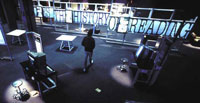
XFR: eXperiments in the Future of Reading -- an Exhibition at the Tech Museum of Innovation and a research project. Seen and used by 300,00 visitors, XFR is an interactive, entertaining and educational exhibition that explores the history of reading, the technologies of today's reading and a few experimental forays into the future of reading. It is intended to make the visitor aware of reading in its many forms, its expanding technologies, its methods and genres, and its promise. It dispels the concept that the digital age will make reading obsolete; it shows how new media creates new genres. The exhibition is composed of multiple independent exhibits, each exploring a different aspect of the message. I developed the overall appearance and layout as well as exhibits showing the history of reading and scanning technology. The visitor “reads” their way in and out without being conscious of it – the same way that we cannot help but read once we have learned how.
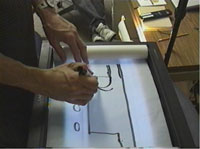
REDAEDALUS: The PARC/MIT Virtual Design Studio. During the Fall of 1998, I was one of the instructors in a graduate design studio in the School of Architecture and Planning at MIT. To assess the DrawStream Station, we (Scott Minneman and I) carried out "desk crits" from our lab and offices at PARC. A desk crit is the central pedagogical activity of architectural design education. Just as in a commercial practice, project heads and other experts review drawings, models, and computer renderings. This is more than a thumbs up/thumbs down kind of review; usually the criticism takes the form of design with the student. We uncovered two genres: asynchronous video conversations (self-contextualizing threaded multimedia conversations) and video cocktail napkins (recorded video fragments that are used as conversational props). Project leader.
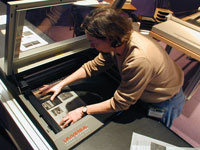
PAIR: the PARC Artist in Residence Program. PAIR brought artists into PARC in order to spark intellectual inquiry and broaden the forms of legitimate industrial research. Begun by Rich Gold, I followed as the program’s second director. Artists familiar with technology were paired with researchers with an interest in the arts; appropriate joint projects were developed. The goal was to create better artists and better researchers rather than art with more sophisticated technology or “prettier” new technology.
Design in the Age of Digital Video. In this project, digital video allowed people to simultaneously watch video recordings and make (or link in) new ones composed of their commentary and viewing reactions, creating threaded video conversations. It uses the TimeStream architecture (a.k.a. "Coral") to play recordings, make new recordings while watching others, and correlate the two. This was combined with the VideoDraw system to create a "DrawStream" station that permits users to make reference to objects and drawings on a shared work surface and to record, index and retrieve these discussions.
The Social Construction of Intellectual Property. This is study of the complex relationship of ideas to innovation. Like my studies of design, it is predicated on the idea that innovation is a social process. So, improving PARC's intellectual property position, means improving its communication practices. This project explores technologies to support the capture and development of intellectual property and the development of "communities of invention". Project leader.
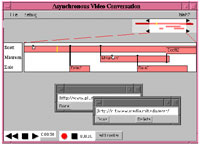
Where Were We. An innovative system of digitally recorded audio and video that permits designers to include snippets of recently recorded material in everyday activity, such as brainstorming meetings.
Design Place 90. Created a shared work environment for industrial designers from David Kelley Designs (now IDEO). Observed them working at distance using CAD, e-mail, phone, conference phone, CADD, and Media Space. Observations used to guide development of next design of technology to support distributed work with and about real objects and spaces. Project leader.
Shared Drawing. Using video and computing technology, explored the ways drawing, sketching, and gesturing can be done at a distance.
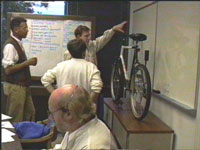
Design Communications Workshops. Groups play roles of different interest groups in design to explore inter- and intra-group communications in design.
Electronic Notebook of Engineering Process. A recordable video disc and hypercard were combined to form a prototype open-ended project notebook. Assisted R. Stults and K. Weber.
Mechanical Design Project. The design of a fix to a forthcoming product was studied. Video was used by members of the design team to record the their activities; the recordings were used by them as a medium of design communications and a shared project journal. With R. Stults, S. Minneman, and K. Weber.
Century Cable Harness Action Team. The use of video to communicate between various groups involved in the transit from design to manufacturing was prototyped and studied.
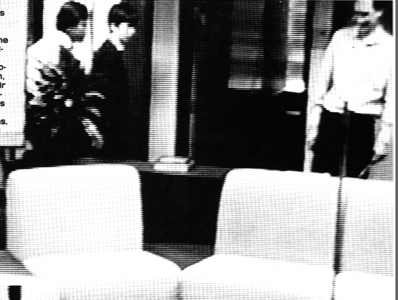
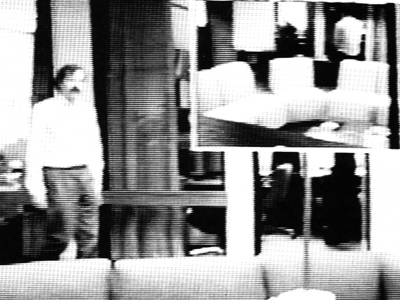 "
"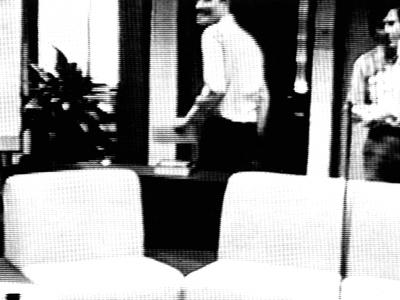
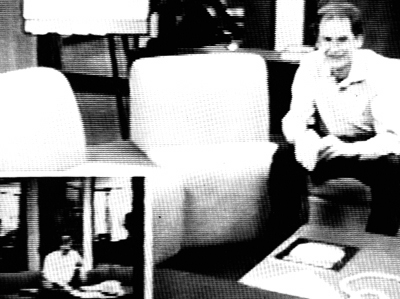
The Portland Experiment. Compressed video, open audio, shared computer file systems, and regular group meetings were used to support a research laboratory split between Palo Alto and Portland. Was an on-going collaborator, contributor, regular lab staff, and part-time visionary, along with every other lab member.
Media Space Link from 16 to 26. Public spaces on different floors of PARC were linked using open audio and video. Explored the limitations of the technology to bridge cultural gap within organizations.
Object Service / Terrain of Associations. A representation of the associations individuals have that give design inspiration and shape design direction. The project explored various ways of maintaining a shared database so that a group could keep current with the design direction of its membership.
Office Design Project. 3 architects worked together using real-time and recorded video in a simulated physically-distributed design studio. Co-produced with Bob Stults.
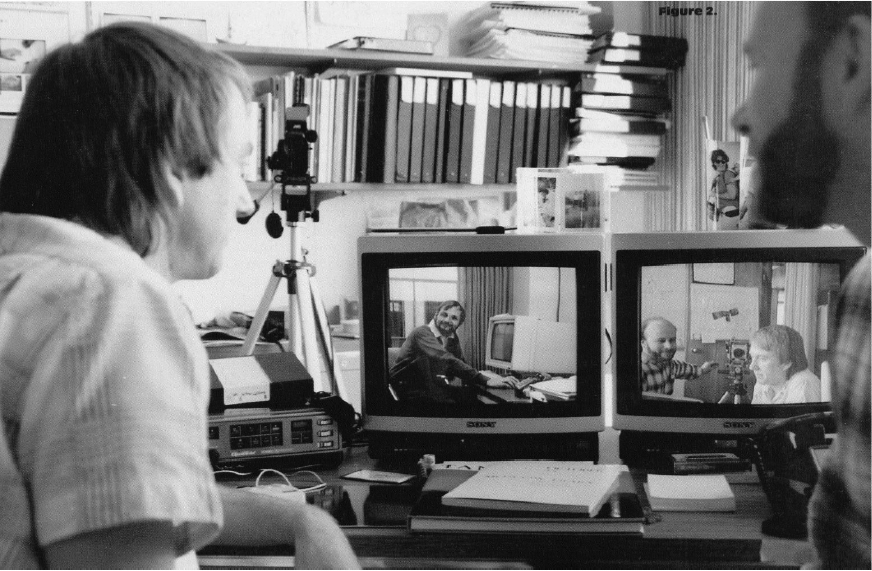
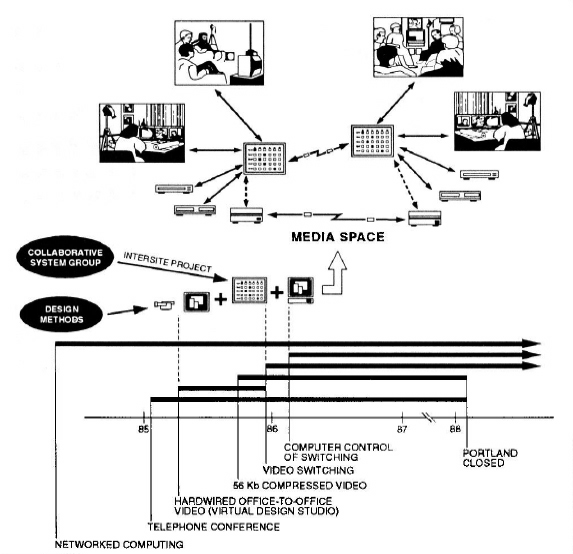
Media Space. An audio/video/computing environment for temporally and physically disjoint designers. System is backbone of PARC multi-media research and the technological expression of ideas to support the social basis of design. A series of implementations were developed and used in regular work by PARC researchers and designers engaged in real design projects. Co-developer of system and project co-leader with Bob Stults.
ShopTalk. Produced a series of polemical and illustrative videos. Videos lay out need to look at design as social process and the ability of video (coupled with computing) to better support this social process.
House Addition. The process of designing and building of an addition to a house was videotaped and put on video discs. This was a demonstration of a prototype design journal.
copyright Steve Harrison 2009






 "
"


